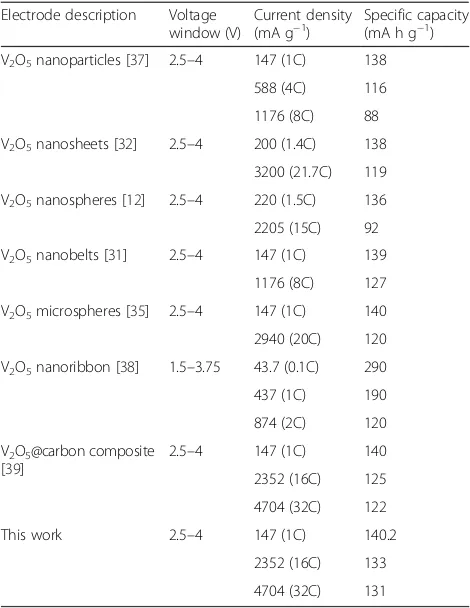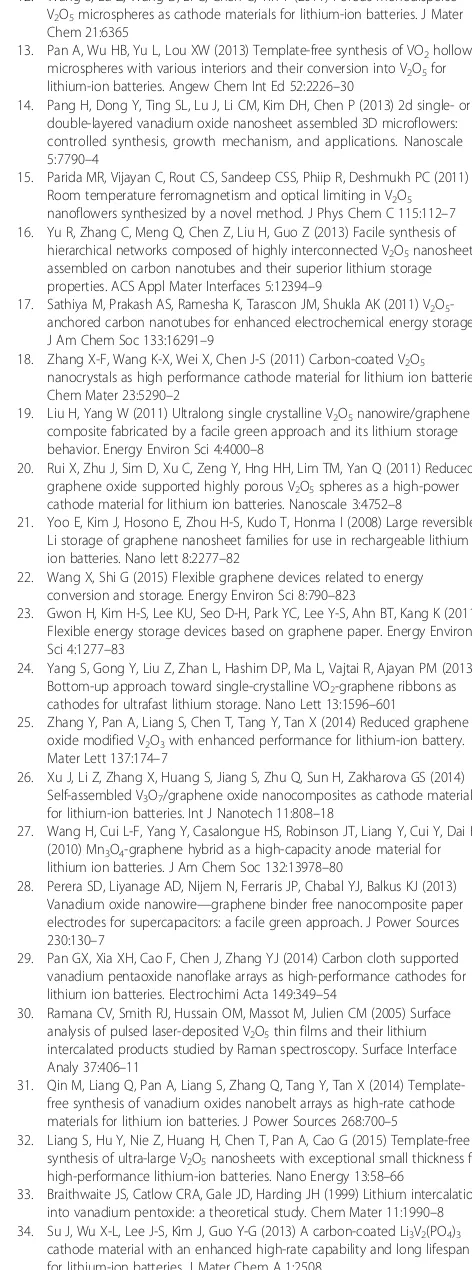Controllable Preparation of V2O5/Graphene Nanocomposites as Cathode Materials for Lithium Ion Batteries
Full text
Figure
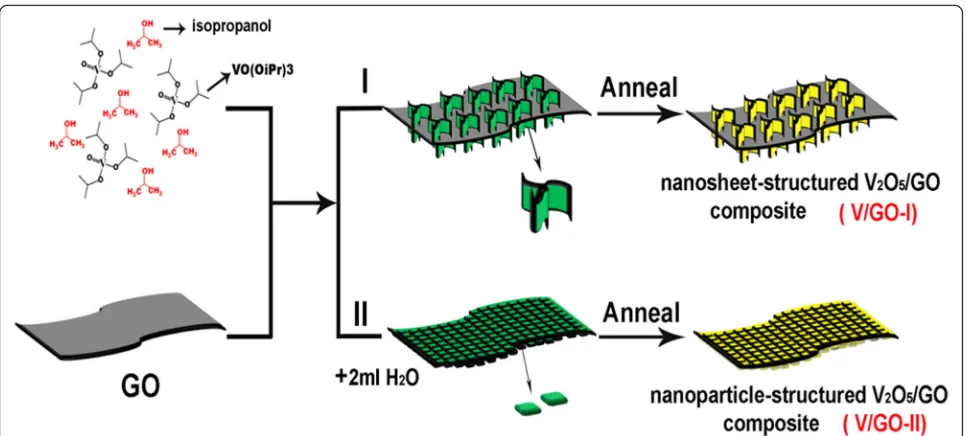

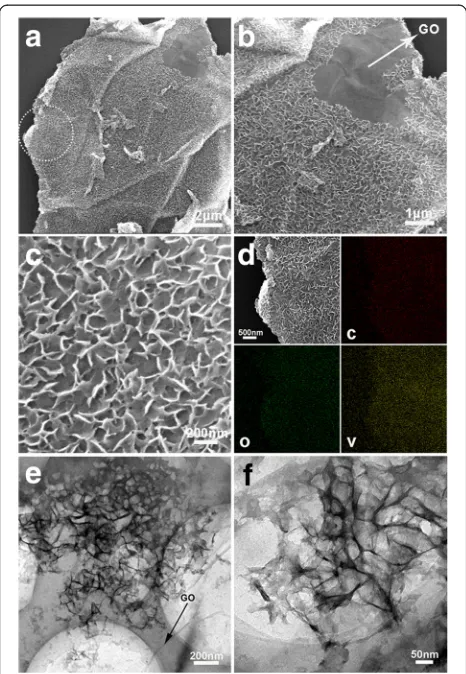
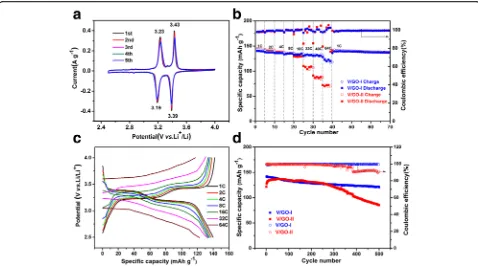
Related documents
Focuses of supplier and integrator actions on organizational and relationship power sources and their resulting network positions. 5 DISCUSSION
340 kCi Co-60 Gamma Irradiation Facility (GIF) so as to enable meaningful research work on the usefulness of this technology on Nigerian food products and to facilitate the
Abstract —The recognition of di ff erent cell compartments, types of cells, and their interactions is a critical aspect of quantitative cell biology. However, automating this
Ammonia Oxidation on the Barium Doped Nano Structured PbO 2 Electrode: An Electrochemical Preparation
(b) into the Action Plan implementing the Hague Programme approved by the Council on 10 June 2005 will be not any longer carried out.. 1997 and 2003, a total amount of € 413.3
Conversely, incorporation of corrosion inhibitors into sol-gel films can enhance the protective ability of the coatings, suppressing the corrosion process in the defects or where
Although the presence of a-thalassemia 2 in Australian Aborigines has been established, i ts extent and frequency in various Aboriginal groups s t i l l need to
The proof of our theorem uses the functorial filtration method, which goes back to the classification of Harish-Chandra modules for the Lorenz group by Gelfand and Ponomarev [6],
